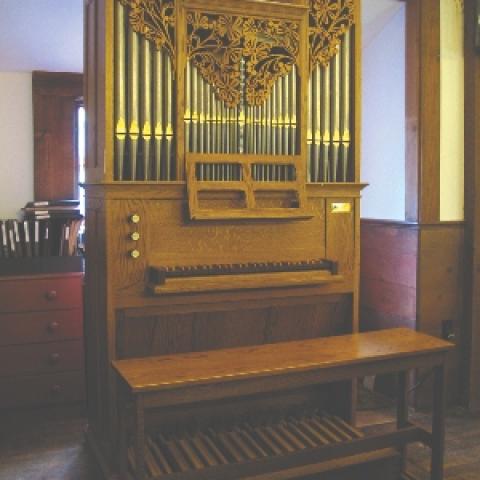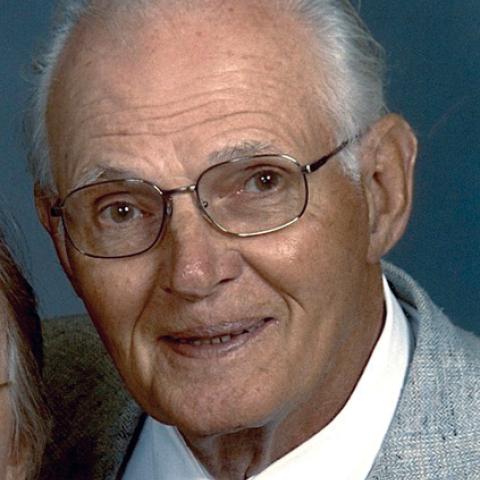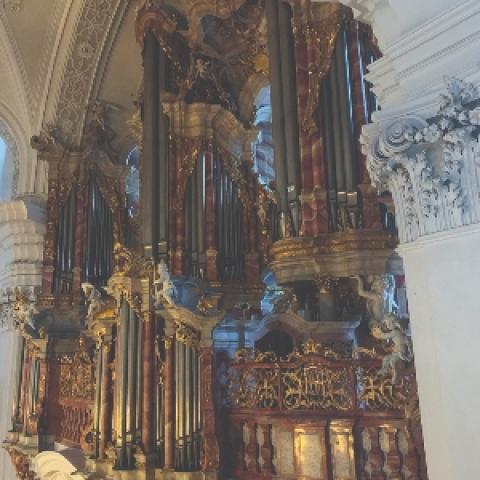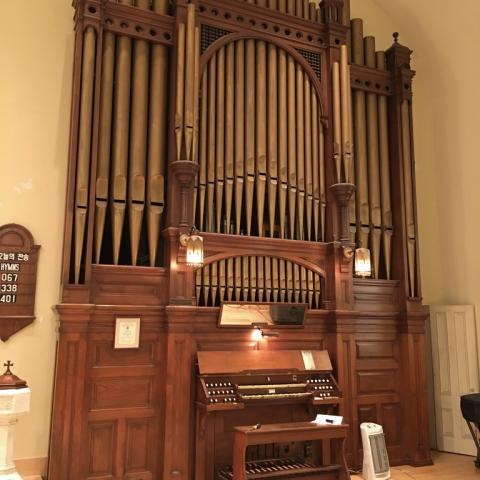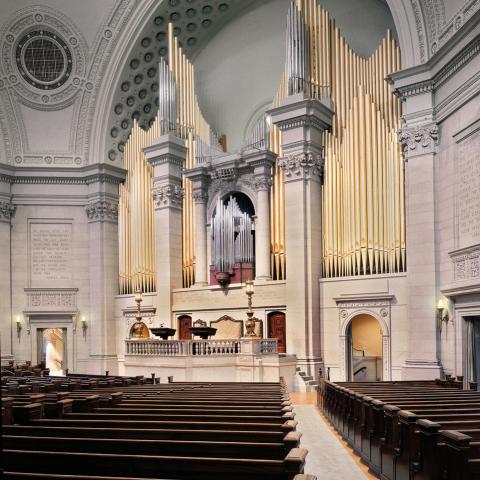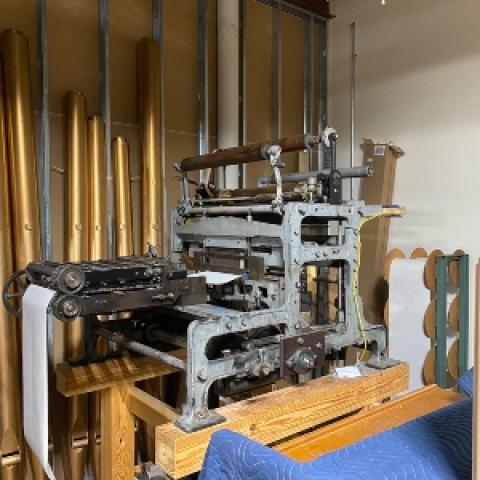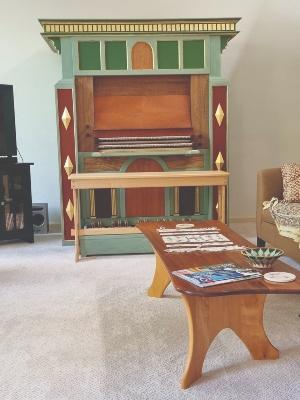
I remember when . . .
Leading up to Christmas of 2019, I decided to stop maintaining organs so I could concentrate more on the administration of the Organ Clearing House, especially the management of organ sales. I met with several colleagues asking if they would be able to take on more maintenance customers, and I wrote to my clients recommending those technicians for the care of the organs I thought they would be best suited for.
As the winter started winding down in early 2020, I was looking forward to missing the first holiday tuning season since I was a teenager, only to find that leading up to Easter of 2020, no one was tuning organs. Like pretty much everything else in our world, the whole business shut down as covid spread virulently around the world.
No one has pronounced that the pandemic is over, and we are still hearing about spooky outbreaks, especially in big cities. But with a few reservations, life seems to have returned to something like normal. This past March, the organ tuners were out and about like never before, documenting each lapsed thermostat, each shallot-encased moth carcass, and each insistent vacuum cleaner on social media. I especially enjoy the posts of Richard Pelland, the prolific organ technician based in New Hampshire, who at my recommendation took on many of my former maintenance clients. His habit of posting videos of his assistant playing freshly tuned organs brings back memories of my mad dashes around the countryside, of the many lovely organs (and a few not so lovely), and of the satisfaction of completing a good tuning.
Would the average parishioner identify that great tuning as integral to the celebrations during Holy Week and Easter? Not likely. But they would go home after church with a tune in their head, and I always knew I was part of that. I believe that a well-tuned organ brings a smile or a raised eyebrow that sour notes cannot.
The body of Christ
Carolyn Manning of the Red River Organ Company in Norman, Oklahoma, posted a photo taken during an Easter tuning from high in the rear of the lofty sanctuary of the First United Methodist Church of Corpus Christi, Texas. The longest resonators of the Trompette-en-Chamade were visible in Carolyn’s photo, as was the console I helped build around 1986. I was working for Angerstein & Associates in Stoughton, Massachusetts, and we rebuilt and expanded the four-manual Reuter organ there. Dan Angerstein, a terrific voicer, was in the thrall of Aristide Cavaillé-Coll, and Lawrence, Kansas, became something close to Paris on Shoreline Boulevard in Corpus Christi, across the street from the Gulf of Mexico.
We did our best to reconstruct the classic shape of Cavaillé-Coll’s grand consoles. My shopmate, pal, and wicked wag Jack Carr built the cabinet, and I built the curved and terraced stop jambs and the four keyboards. I do not remember the exact dates, but I sure remember that the installation trip was in the heart of summer, a big deal for this life-long northerner. The church’s vacation bible school was going on while we were there, and I have a hilarious memory of the church’s organist, wearing a “coat of many colors,” having been put in charge of a live camel. This had not been his first choice, and he was not mincing words.
A local electrician was on the job with us, ostensibly helping identify the many cables running from the two organ chambers in the front of the church to the Antiphonal organ and the Trompette-en-Chamade. He was using live current to “ring out” the different cables. It turned out that there were speaker wires from the PA system in the same conduit that looked just like organ cables, and when he touched those with his hot wire, we heard such a sound. I am pretty sure that was the end of those speakers. The big reed had been given in memory of a young parishioner who was killed in Vietnam. The drawknob is engraved “Trompette Boyd.”
Our flight from Boston to Houston at the beginning of that installation was my first trip in first class. My coach seat had been double-booked with a guy who was refusing to move. I was rewarded for my ambivalence, and I took full advantage of the perks of first class even though it was a morning flight.
It was fun to see Carolyn’s post, reminding me of that job from so long ago. It’s nice to know that the organ is still being used and cared for.
§
I do not have a tally of how many organs I have maintained, but I know it is in the hundreds. My tuning career started in Oberlin, Ohio, when I was working for John Leek. John was the organ and harpsichord technician for Oberlin’s Conservatory of Music and had a healthy side business of maintaining instruments in that general area. I worked with John part time and summers while I was student and shifted to full time after I graduated. During my junior year, John left the school to concentrate on his business. Altogether, I worked with John for about seven years, during which time we built several new harpsichords and two organs together. We renovated and releathered a small fleet of organs and went on hundreds of service calls together. We took care of organs in big city churches and in tiny hamlets far out in farm country. We covered an area from Toledo and Cincinnati to the west, to Erie and Pittsburgh to the east.
The biggest trip I took with John was to deliver a harpsichord we built for a woman in Oakland, California—she had been a student at Oberlin and admired John’s instruments. It was the summer after I graduated, and John proposed the trip to me saying it would take two weeks. I would not get paid (I suppose he was not getting paid either), but we would stay in nice hotels and eat in good restaurants. We would gamble in Reno, see the Golden Gate Bridge, and swim in the Pacific Ocean. Of course I’d go.
We loaded his butterscotch-colored Dodge van and headed west. It is about 2,500 miles from Oberlin to Oakland, and we drove 500 or 600 miles each day. We marveled at the open spaces, hunkered down under bridges to sit out thunderstorms, and drove all day from Salt Lake City with the mountains of Nevada dead ahead that never seemed to get closer until we reached them. When we stopped for gas after crossing into Nevada, I put a dime in a slot machine, received a little cascade in return, and was all ready for Reno. We stayed overnight in Elko, Nevada, and ate dinner in a Basque restaurant recommended by Oberlin voice professor Howard Hatton. And we got creamed in Reno. My meager cash supply disappeared, and John played a few hands of blackjack—it was remarkable how often the dealer got twenty-one.
Arriving in Oakland, we carried the harpsichord into the house, and unpacked and set it up. John tuned it and fiddled with the voicing. We went outside for a cigarette and were admonished by the client’s physician husband about the dangers of smoking. The next evening, he brought home a cancerous lung in a jar for our viewing pleasure.1 That jaunt with John was the first of many cross-country trips I have made carting about instruments.
One summer, John and his wife Maria wanted to add a large screened porch to their house, and he flung the resources of his company at the job. He made a nice drawing of a post-and-beam structure, and off we went. There would be a lofty pitched ceiling, stained and varnished plywood wainscoting, and a floor of wide pine planks. We cut mortises and tenons on the machines in the workshop and assembled the frame and shingled the roof. We made screened frames to fill the window openings, and we painted everything. Painting the floor, I had my back to John, but heard a big increase in his industry. I turned to find him rushing to paint me into a corner.
John Leek passed away in the fall of 2019, and I drove to Oberlin for his funeral. It was wonderful to see Maria and their children Paula, James, and Peter. A week later, Maria wrote me a note thanking me for coming, which inspired another flood of nostalgia—her handwriting had been on my paychecks for seven years.
§
Dan Angerstein had a large stable of service clients, and when he closed his business in 1987 to become tonal director at M. P. Möller, I assumed most of those accounts—that was the foundation of the Bishop Organ Company located in North Reading and then Wakefield, Massachusetts. When I joined the Organ Clearing House in 2000, I continued the care of most of those organs as the BOC morphed into the OCH. By the time I stopped doing service work in early 2020, there were still seven organs I had been caring for since 1984—thirty-five years. There were six instruments built in the late 1980s whose care I assumed when they were new. I was the only technician to work on them for the first thirty-plus years.
Shortly after I started the Bishop Organ Company, I became curator of the huge Aeolian-Skinner organ (four manuals, 237 ranks) at The First Church of Christ, Scientist (the Mother Church) in Boston, and of the double Skinner/Aeolian-Skinner organs at Trinity Church on Copley Square. Jason McKown had cared for the Mother Church organ since its installation in 1952 and had worked for Trinity for over fifty years. He was in his mid-eighties when I met him, and he introduced me to many of his clients as he was finally ready to retire. Jason’s tenure at the Mother Church was extended so he would overlap with me for six months to show me the ropes of caring for such a large organ. We tuned there every Wednesday, and Jason’s countless stories were an important part of my education.
As a young man, Jason had worked personally with Ernest Skinner installing his Opus 692 at the West Medford Congregational Church in Medford, Massachusetts, in 1928 and had maintained it ever since. I worked there until 2009 when the church closed and the building was sold.2 Between us, Jason and I maintained that organ for eighty-one years.
Less is more.
When I mention Skinner Organ Company Opus 692 (1928) in West Medford, Massachusetts, I remember the pristine interior of the instrument. It was still playing on its original leather and had never been altered. This reminds me of another Skinner organ less than ten miles away that I have written about recently, Opus 459 (1924), which was sold through the Organ Clearing House to Galilee Church in Virginia Beach, Virginia. Both organs had been regularly maintained and well used, and neither show the familiar wear-and-tear damage of stretched tuning scrolls, out-of-round pipes, cotton balls left in mixture pipes, or spare wires looping about.
The only other century-old organs I have known in like-new condition are those in small remote churches that had never seen organ technicians. The organs might be full of spider webs and coal dust from obsolete heating systems, but the pipes and interior components could be straight from the factory. Ironically, organs that have never been maintained are the best candidates
for restoration.
I offer a challenge to all my colleague organ tuners and technicians. Leave each organ looking as though no one has been inside. Do not harm the organ in the interest of forcing it into tune. Do not leave little piles of your rubble. Do not leave obvious evidence of quick-and-dirty repairs. I know this is a tall order. I know that many churches are struggling financially and are unable to fund proper repairs. I am sure you will often have to take my admonition with a grain of salt, but I encourage you to respect the instruments you work on and the people who built them.
Those of you on social media, please keep sharing your experiences with the organs in your care.
Retirement project
Retired organbuilder Gene Bedient has set about building a new two-manual tracker organ for his home and has documented the process intricately and intimately on Facebook. Starting with making open 8′ bass pipes from wood and progressing through building windchests, keyboards, actions, bench, and lately moving the completed base of the organ into the house with the help of neighbors, he has posted hundreds of photos with colorful descriptions of each step in the process. Every now and then, he posts a photo of the drawings so we have an idea of what the finished organ will look like. I recommend you follow Gene’s page and scroll through the last couple years of his documentation. This is a much more creative use of Facebook than photos of your cats or your savory breakfast.
Gene discusses the materials he is using, shows photos of complex gluing setups, and acknowledges the occasional need to “split the difference” to make something line up perfectly. His workshop is in the garage that adjoins the house, and while it is a tiny space and this is not the tiniest of residence organs, Gene’s photography provides a fascinating educational experience for anyone interested in how a pipe organ is built. I am eager to follow the continuation and culmination of this project.
As I write, I have been corresponding with Gene about his project, and he offers this statement about “Bedient Opus # Undecided”:
This home organ is for practice purposes and has only two stops—the lower manual, Principal 8, and the upper manual, Flute 4. Each manual couples to the Pedal. No manual to manual coupler. The lower manual is suspended action. The upper manual keyboard pivots in the center and pushes the top-of-grid pallets up to play, like the French Positif and Echo actions. It is the hope that two beautiful stops and two contrasting but light and responsive key actions will make the organ a pleasure to play.
Thank you, Gene, for sharing your exciting project so generously.
Notes
1. I stopped smoking two years later, on New Year’s Eve, 1981, when my first wife Pat was pregnant with our first child. Michael was born the following March into a smoke-free home.
2. I was in touch with the new owners of the building asking if they had plans for the organ. They replied that they did not plan to use it but did not want to remove anything original from the church building. I check in every now and again.

